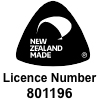Preparation based on new substrate installations.
Preliminary Checks
Check should be made using a straight edge to ensure the wall is flat, plumb and true. Any irregularities should be taken out by straightening using a rasp.
The Render coating is not designed to straighten deviations which exceed the specified Rockcote Render System thickness.
Once the substrate is deemed ready for plaster then the main contractor can continue to fix the internal linings, this is so that the main contractor can minimise the chance of any damage to the external plaster cladding that may be caused from the fixing process of the internal linings.
Builder Supplied Flashings
Make sure all builder-supplied flashings are in place. The architectural drawings provide a list of possible flashings.
RCS Flashing Installation
Refer to the flashings as outlined within the Resene Construction Systems Specification
Control/Expansion Joint Setouts
For more information about control joints refer to the technical note on the Resene Construction webpage at the following link https://reseneconstruction.co.nz/control-joints/
The main contractor/substrate installer is responsible for all control joints, which must comply with the substrate supplier’s specifications.
Clean Surface
If the substrate has been left exposed to UV / sunlight for more than two weeks, dust and dirt may build up on the surface, the surface may also discolour (yellow) you must remove all surface dust, oxidisation, and other contaminants to reveal fresh polystyrene. Use a rasp or a stiff broom to prepare the substrate.
Masking
Before applying the render, masking must be applied to all joinery, pipes, roofs, and all areas likely to be marked by the render. Use drop cloths and ground covers to keep the working areas clean.
Colour selection
For more information about light reflectance values refer to the technical note on the Resene Construction webpage at the following link https://reseneconstruction.co.nz/light-reflectance-values/
Penetrations
PVC sheathed electrical cables must be prevented from direct contact with the sheets. When cables must penetrate the sheets for exterior electrical connections, the cable must be directly supported by passing through an electrical conduit.






